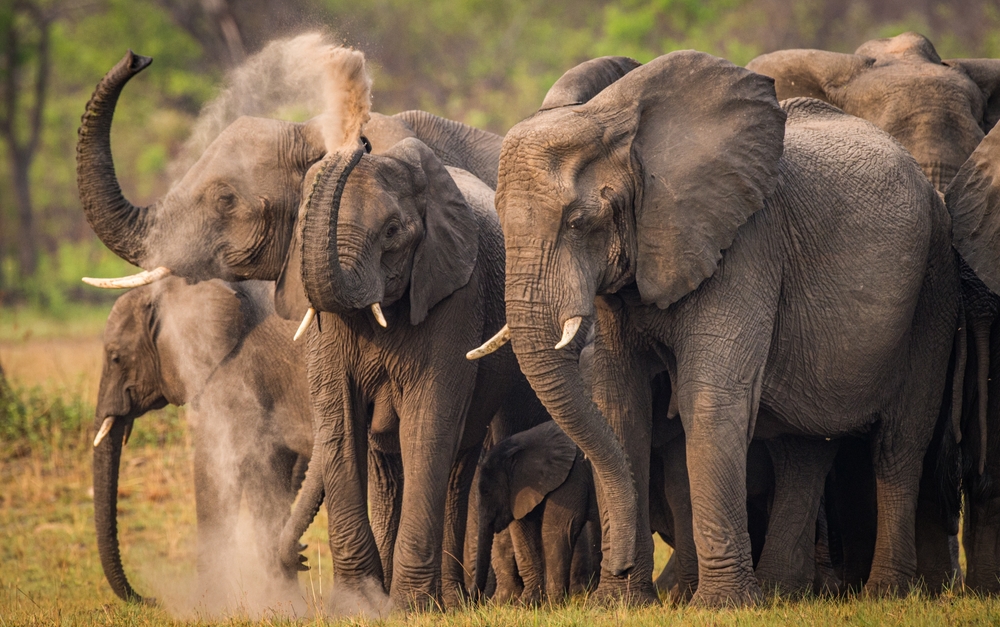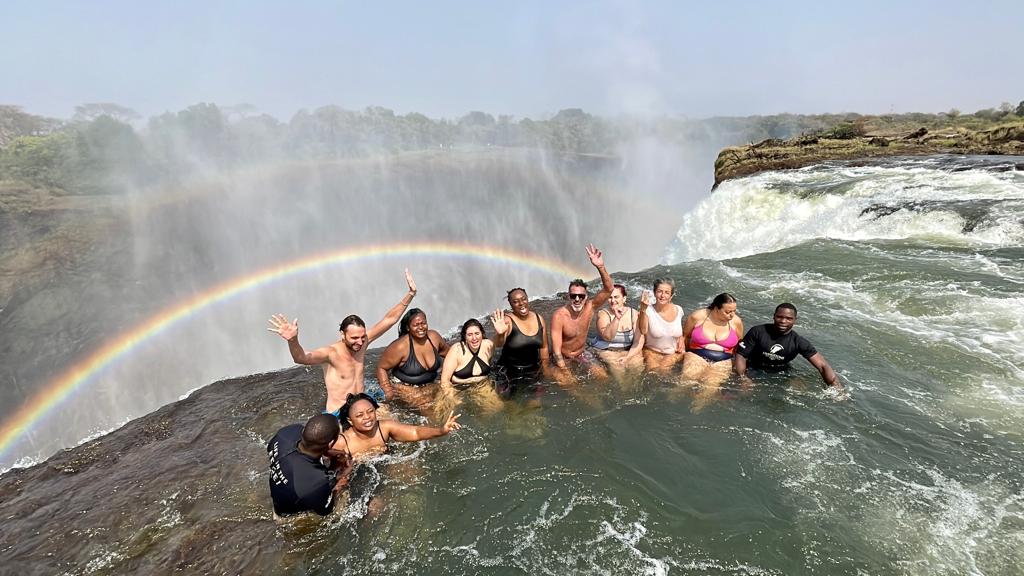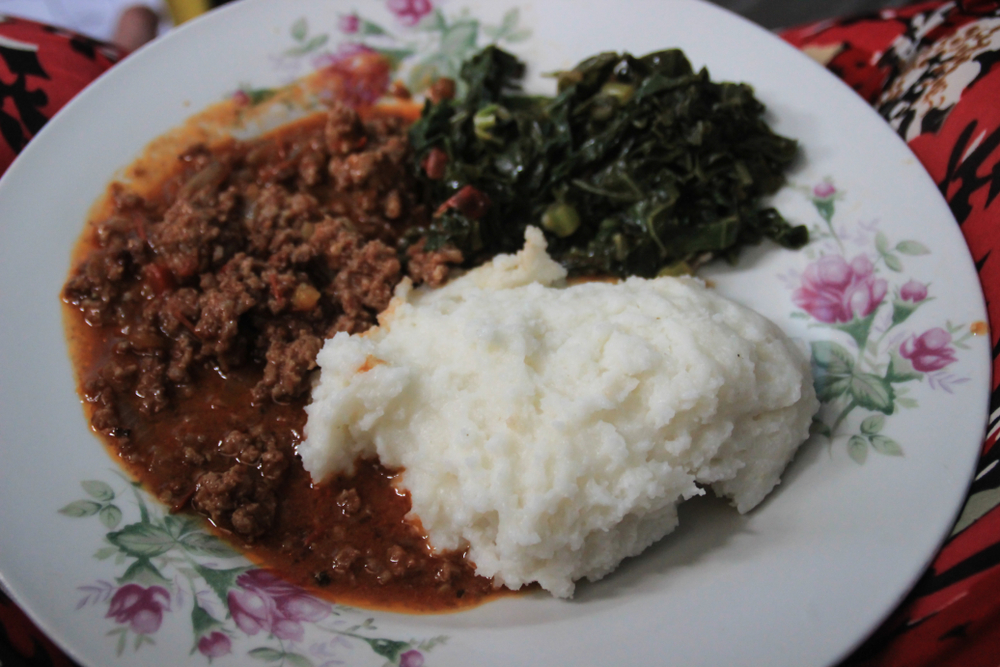Vast stretches of land beyond what the eyes can capture, fluttering butterflies in shades of copper and white, and splendorous yet endangered animals roaming freely across its natural protectorates – these are only a few of the wonders Zambia has to offer.
Zambia, a beautiful stretch of a country located at the heart of southern Africa, is often sided for its African sisterly countries such as Kenya, Tanzania, and Uganda. However, for those who are eager to explore new terrains and engage in adventurous activities on a tight schedule, the home of nshima (maize cornmeal porridge) and the Zambezi River caters to the modern-day adventure traveler.
Here are a few reasons why this gem of a country needs to be considered everyone’s next journey destination.
Victoria Falls
Victoria Falls, certainly one of the Seven Natural Wonders of the World, is undoubtedly a destination for any travel enthusiast seeking an unforgettable experience.
Contrary to popular belief that these falls might be near Lake Victoria, the vibrant and translucent Victoria Falls happen to be located in Livingstone, on the east side of Zambia, near the Zimbabwean borders.
The sheer grandeur and power of the falls are breathtaking. Complemented by a perpetual rainbow, they are easily considered one of the top attractions in the country. Moreover, depending on whether it is the high or low season, the falls can stretch to an impressive combined width of 1.7 kilometers and reach a height of 108 meters, placing them in the rank of the five largest waterfalls worldwide.
Visitors yearning for a captivating experience can take on Devil’s Pool – a natural infinity pool. Visitors yearning for a captivating experience can take on Devil’s pool – a natural infinity pool. Truly, it offers a unique viewpoint, catapulting visitors to the precipice of the falls, and provide for an unmatched and exhilarating perspective for those who dare. Although initially terrifying, what with the currents of the Zambezi river pushing one in multiple directions, the guides at the falls ensure that this activity is made more safe through their instructions, and are seasoned photo-takers at the attraction.
Moreover, the falls provide more than merely a pretty sight. Visitors to the falls can opt to bungee jump from Victoria Falls bridge, and white-water raft down the mighty Zambezi river. For those who can afford it, a helicopter ride provides a scenic bird’s eye view of this natural wonder.
Safaris and Game Drives
Rhinoceros, elephants, impalas and giraffes – these are only a few of the animals one can easily spot in Zambia.
Naturally, those going to Zambia will want to experience the country’s safari and game drive activities which offer an unequaled wildlife experience that allows visitors to not only interact with nature but also witness some of the most iconic African animals in their natural habitat.
One such animal is the elephant which can be seen up close. These majestic creatures roam freely across the vast landscapes and several national parks (Zambia has up to 20 national parks and over 30 game management reserves). On occasions, they even come up close to villages, or can be spotted crossing roads with their herds!
The white rhino, the world’s second-largest land mammal, is yet another renowned species that draws tourists to Zambia for many reasons. It is one of the few countries in the African continent where white rhinos can be observed in the wild – sometimes along with their young. The government’s and rangers’ efforts to conserve this critically endangered species have been most effective, especially in Mosi-Oa-Tunya National Park where the population of rhinos has been steadily increasing despite poachers’ attempts to hunt them down.
From Kafue National Park to the Blue Lagoon National Park, each province and park is characterized by its own distinct flora and fauna, almost guaranteeing a diverse range of wildlife encounters, from colorful birds and buffalo to mellow zebras and hippopotami. Game drives usually take place early in the morning (as early as 6 AM) or late afternoons, as these are the surest times when animals are most active and can be photographed up close.
For those looking for a more note-worthy experience, they can easily journey up to the GRI Wildlife Conservation Center, near the capital Lusaka, where baby elephants are homed following poaching attempts, or the Mukuni Big Five, a remarkable sanctuary of big cats such as lions, and non-native tigers in need of care.
Additionally, Zambia’s emphasis on environmentally-conscious tourism makes the safari and game drive experiences even more memorable. To safeguard its ecosystems, the government has created a multitude of national parks and natural protectorates often with signage and interesting facts about the country’s wildlife, and has systematically trained its rangers, in order to ensure that Zambia’s natural legacy will be enjoyed and appreciated by future generations both domestic and international.
Those going on safaris and game drives are always accompanied by guides, with strict rules to adhere to for both their and the animals’ safety.
Rich tribal cultures
Ask a Zambian where they come from, or which language they natively speak, and they will happily boast their tribal origins.
Landlocked, the country is home to a rich and diverse heritage shaped by over 70 tribes, although the official religion is Christianity. The tribal cultures and traditions of Zambia represent a tapestry of multiculturalism, each contributing to the country’s unique identity as a nation, before and after British colonialism.
Unlike the Maasai in Kenya, these tribes can be visited on special occasions. Among them are the Tonga people, celebrated in the Choma Museum and Crafts Center; this group primarily inhabits the southern province of Zambia, with a particular fondness for agriculture and ancestral worship. Their culture is expressed mostly via music and dance, with indigenous instruments like the kalumbu drum and horn playing a central role in Tonga music.
Similarly, the Bemba constitute one of the largest ethnic groups in the country and are predominantly found in the northern and Luapula provinces. The chieftaincy system of the Bemba is ingrained in their culture, and each chief serves as a guardian of their people’s traditions and customs, often also serving as revered leaders of villages.
In addition to the Tonga and Bemba tribes, Zambia is home to numerous other diverse tribes such as the Lozi, Ngoni, Tumbuka, and Chokwe, each with their distinct practices and belief systems. More can be known about them by traveling to their respective provinces, or by visiting Zambia’s oldest museum in Livingstone, or the Lusaka National Museum.
Wonderful, traditional food
The Zambians like their food hearty and filling. Usually, similar to Southern African cuisines in general, the cuisine relies on stews and is often accompanied by a vegetable side (ndiwo) such as spinach or rape (similar to kale), and staple yet nationwide consumed nshima. Surprisingly, Zambia’s tomatoes are delicious and are often used in side dishes including okra, or with pumpkin leaves, onions, and groundnuts (chibwabwa).
Inspired by their wildlife and deeply rooted in the country’s diverse cultural heritage, traditional meals include Village Chicken, ifisashi (greens in groundnut sauce), and mbuzi (goat stew). For those looking for a more adventurous take on the cuisine, they can savor fried grasshoppers, fried sardines (kapenta), or crocodile meat steak. For the most part, meals are characterized by simplicity, and the use of locally sourced ingredients without an over-emphatic use of spices. Nonetheless, Zambians are avid carnivores, and they take great pride in their game meat, which can also include kudu, and impala.
Juices are abundant: from avocado leaf infused with ginger to mango and papaya, these beverages are particularly consumed when the weather is warm or when in need of a sweet pick-me-up. Similarly, while the country is not big on sweets and desserts, Zambians cook delectable fritters (vitumbuwa) made from baobab fruit which can be homemade or found as common street food.
Heart of gold
Friendly, and with a stellar sense of humor, Zambians are some of the most generous and welcoming people one can ever meet. They luckily possess an innate spirit of giving and kindness that is deeply ingrained within Zambian culture, and have remarkable patience when addressed with a myriad of questions.
They also possess a natural ability to make others feel at ease, with their warm smiles and genuine interest in getting to know others. It is common, and very often expected, to strike up a conversation with a stranger or greet someone they pass on the street. Also unsparing and willing to help others, Zambians have a sense of communal kinship, with most – if not all – belonging to tribes and villages across the nation.
Travelers will often be met with curiosity and a smile, and if lucky, will be offered an icy cold bottle of Mosi (local beer) or popular Amarula (cream liqueur from South Africa) on the house. They will not shy away from taking pictures with travelers, and village guides provide exceptional facilitation and interpretation to local customs.
At parties, Zambians will sing and play beloved traditional songs, form dance circles, and pull one in to join the festivities without batting an eyelash.
Most noteworthy is also the Zambian attitude to taking care of protectorates and wildlife. Due to their proximity to nature, Zambians are attuned to their natural environments, have a deep reverence for animals, and each is quick to share his or her own anecdotes about wildlife encounters.
Egyptian Streets would like to introduce the Zambia Series, a series of articles and features aimed at highlighting unique aspects of Zambia’s heritage and tourism. The content is a byproduct of a familiarization trip undertaken under the auspices of the Zambia Tourism Agency.










Comment (1)
[…] The Zambia Series: Why Everyone Needs to Visit the Home of Victoria Falls […]